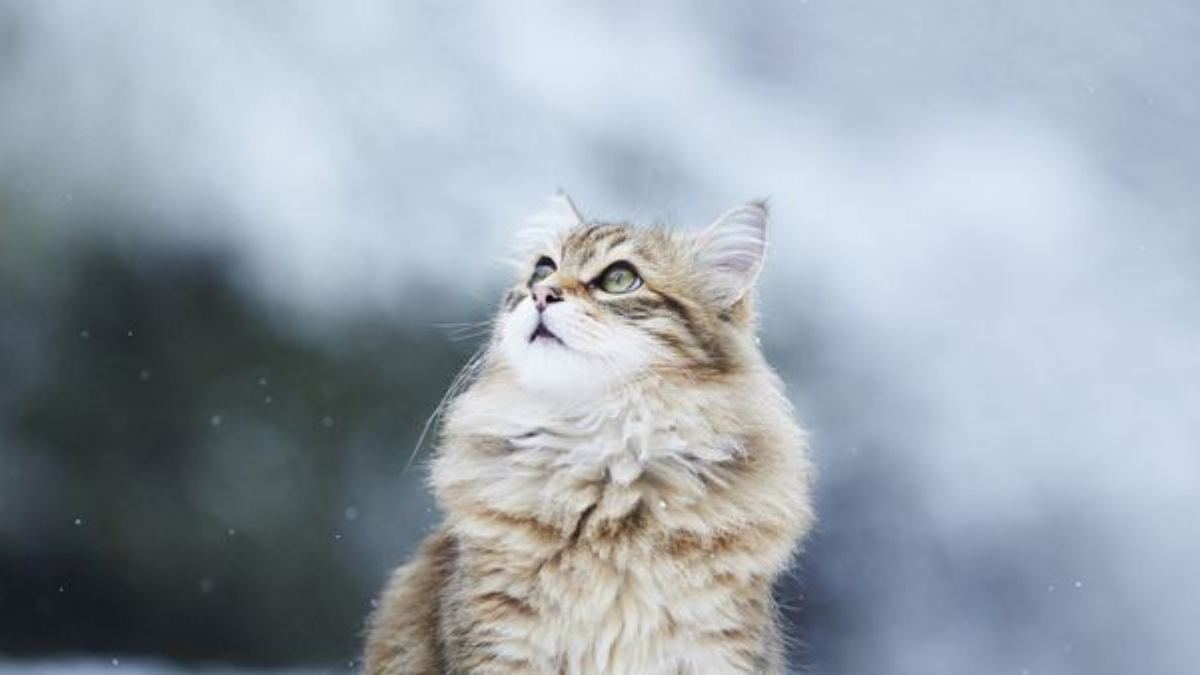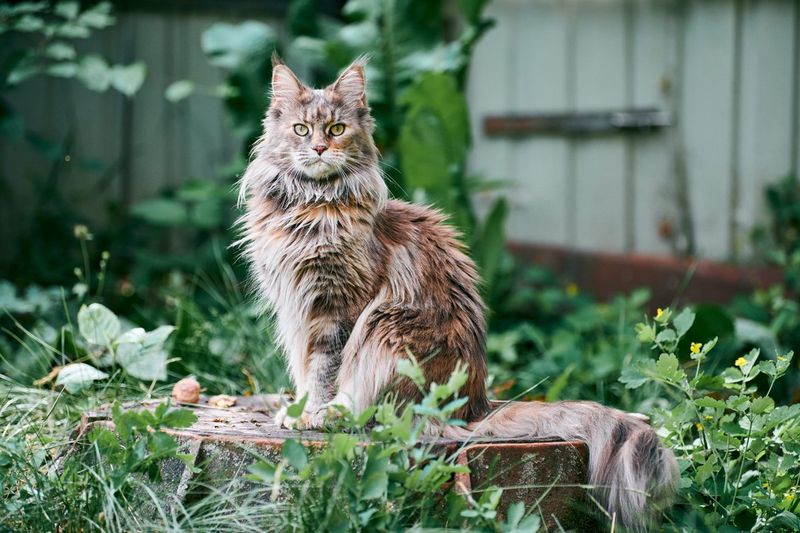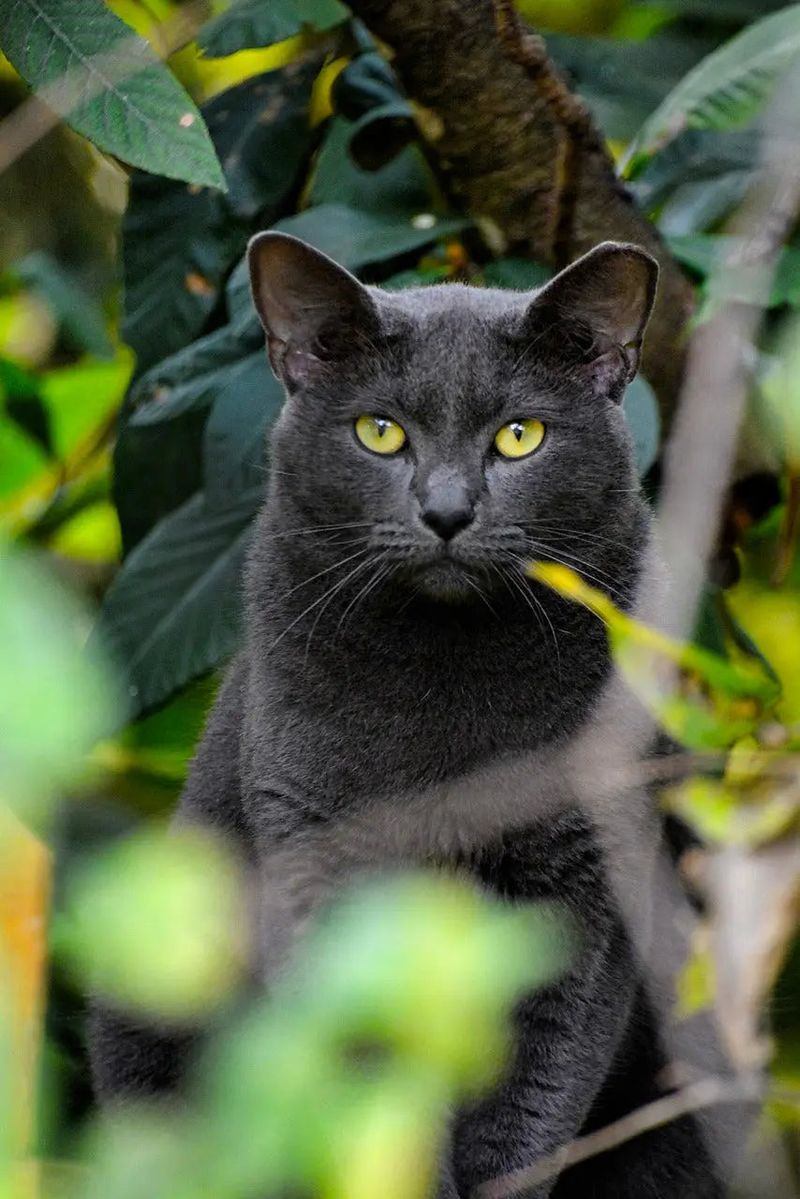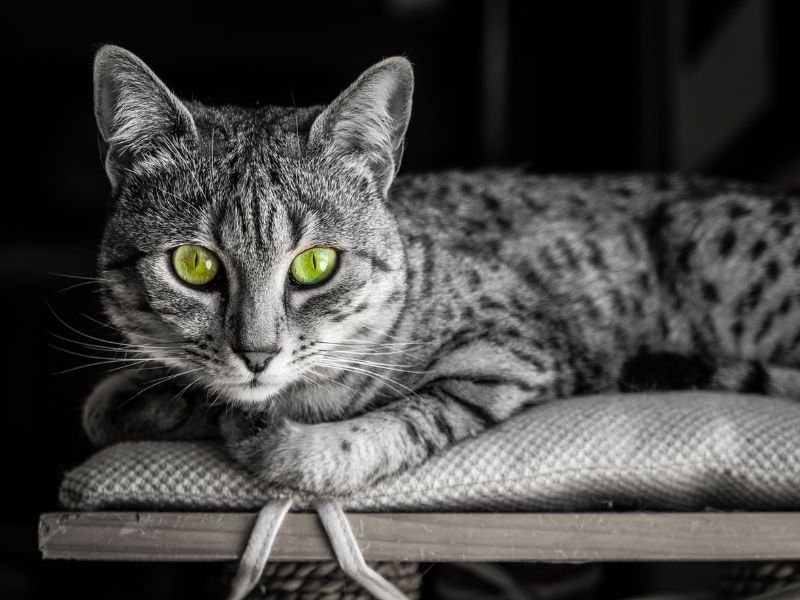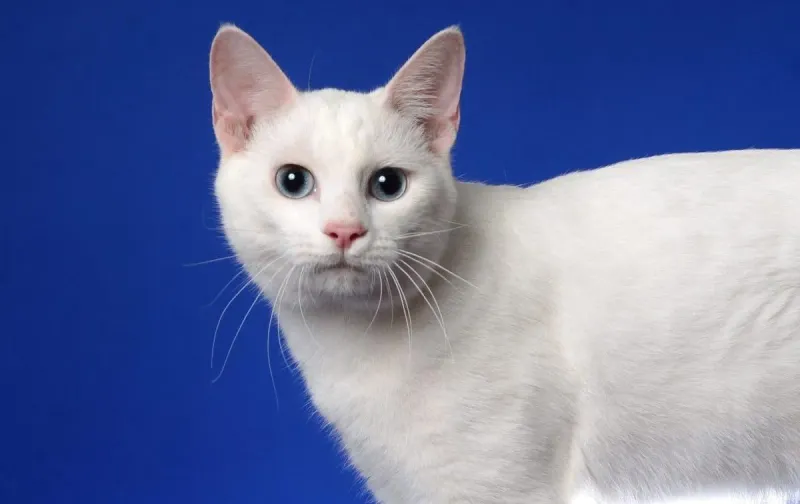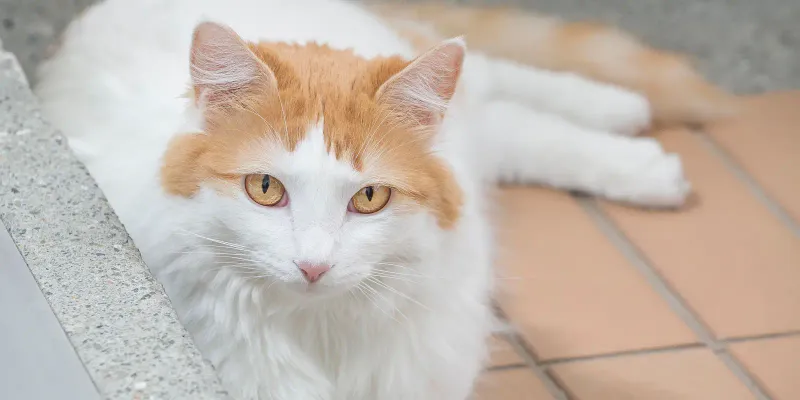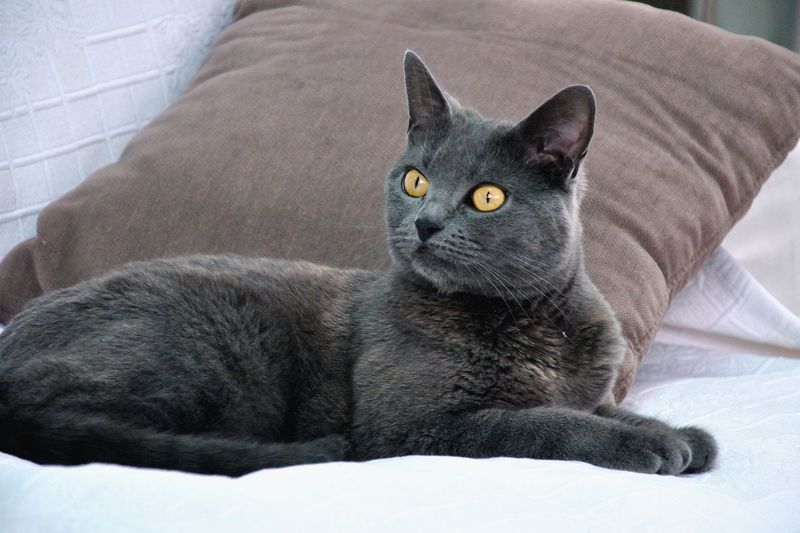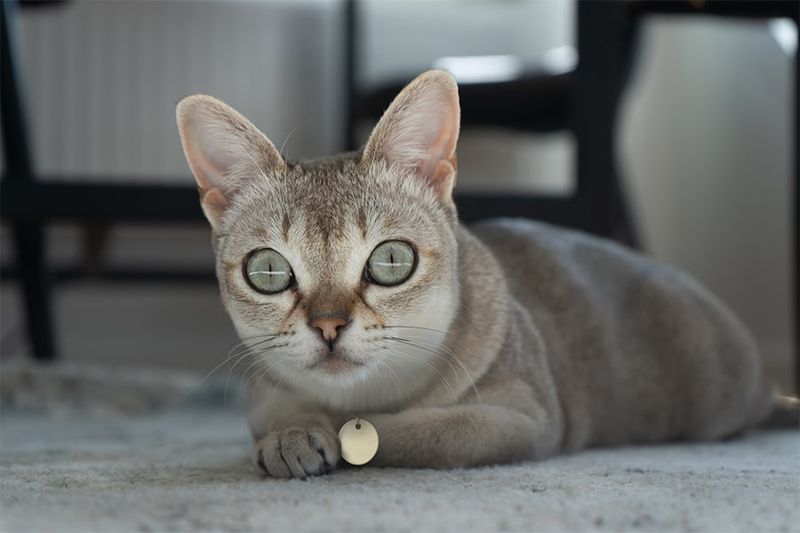📖 Table of Content:
Cats have shared space with humans for millennia, yet certain breeds still carry an air of mystery. Beneath the surface of their soft fur and steady gaze lies a legacy shaped by ancient cultures, myths, and rituals. Some were worshipped, others feared, but all left their mark on human history.
These breeds often come with stories that stretch beyond the ordinary. From royal courts to remote temples, they’ve been seen as symbols of power, luck, or even omens. Their pasts are layered with legend, blending fact and folklore into something uniquely captivating.
Unraveling the origins of these mysterious cats offers more than trivia. It reveals how deeply cats have influenced—and been influenced by—human lives. Each breed is a living artifact, carrying whispers of civilizations long gone.
1. Maine Coon
North America’s gentle giants have origins shrouded in maritime legend. Sailors once believed these massive cats were the result of raccoon-cat crossbreeding (biologically impossible, but the bushy tails fueled the myth).
During the witch trials era, Maine Coons were sometimes considered familiars, with their tufted ears and intelligent eyes marking them as creatures of special power. Some families passed down tales of ancestors hiding these cats during persecution times.
Their water-resistant coats and fishing abilities made them invaluable on ships, with captains breeding the best mousers and creating bloodlines that continued for generations in seafaring families.
2. Korat
Ancient Siamese royalty treated these silver-blue cats as living good luck charms. For centuries, Korats were never sold—only given as gifts to those of high status or exceptional merit.
Thai villagers believed these cats could summon rain during droughts. Families would carry their Korats in processions around rice fields, the cats’ silvery coats resembling rain clouds in the sunlight.
Historical records show some Korat bloodlines were meticulously documented on palm-leaf manuscripts, with certain lines traced back over 500 years through temple records. Their heart-shaped faces were considered signs of spiritual blessing.
3. Norwegian Forest Cat
Viking ships carried these hardy felines across treacherous seas as valued rodent hunters and companions. Norse mythology connects them directly to Freya, goddess of love and fertility, whose chariot was pulled by giant forest cats.
During harsh Scandinavian winters, certain families claimed their forest cats would disappear for weeks, returning with thicker coats and wild gleams in their eyes. Folk beliefs suggested they communed with woodland spirits during these absences.
Nearly extinct after World War II, dedicated breeding programs rescued the remaining pure bloodlines. Some Norwegian families can trace their cats’ ancestry to specific mountain valleys where isolated populations developed unique traits.
4. Egyptian Mau
The spotted coats of these ancient cats appear in tomb paintings dating back 3,000 years. DNA testing confirms they’re one of the few naturally spotted domestic cats with direct links to ancient Egyptian felines.
Temple records describe special Mau bloodlines kept by priestesses of Bastet, the cat goddess. These sacred lines received special diets and ritual care, with their kittens considered divine messengers.
During political upheavals in Egypt, wealthy families smuggled prized Maus to safety, often hiding breeding records in coded documents. The characteristic scarab beetle mark on their foreheads was considered protection against evil, with some families believing their Maus could detect malevolent spirits.
5. Japanese Bobtail
Feudal Japanese lords kept special registries of these lucky cats with pompom tails. Emperor Ichijō (986-1011 CE) documented his favorite bobtails in court journals, describing their unique personalities and hunting prowess.
The famous beckoning cat (maneki-neko) statues seen in businesses worldwide originated from tales of a specific bobtail that saved a feudal lord from lightning by beckoning him into a temple. Some families claim descent from this legendary cat’s bloodline.
Silkworm cultivation families particularly valued these cats, as they protected the precious moths without disturbing them. Specialized breeding created lines that hunted mice but instinctively avoided silkworm chambers.
6. Turkish Van
Swimming cats from the Lake Van region carry genetic memories of the biblical flood. Local legends claim these cats swam alongside Noah’s Ark, receiving a blessing from God that marked their shoulders and tails with russet colors resembling wet fur.
Monastery records from the 15th century describe special Van bloodlines kept by Armenian monks. These cats were trained to climb steep walls to light oil lamps that had gone out, using their natural climbing and swimming abilities.
During the Armenian genocide, families fleeing persecution brought prized Van cats westward, often sewing breeding records into clothing hems. Some modern Van owners can trace their cats to specific mountain villages.
7. Russian Blue
Czarist Russian aristocracy kept these silver-blue cats as status symbols and believed they could absorb negative energy. Family letters from the Romanov era mention specific Blue bloodlines that served as companion cats to royal children.
Sailors from Archangel brought these cats to England in the 1860s, where their dense coats—evolved for Arctic winters—amazed cat fanciers. Ship logs recorded specific cats and their offspring, creating the first documented pedigrees.
During the Russian Revolution, noble families smuggled prized Blues to safety alongside family jewels. Some cats traveled hidden in secret compartments of trunks, with their lineage papers sewn into coat linings.
8. Chartreux
Carthusian monks in France bred these blue cats for centuries, valuing their silent hunting and meditative personalities. Monastery records from the 16th century detail specific bloodlines kept for their mousing abilities and quiet companionship during prayer.
During the French Revolution, aristocratic families hiding in monasteries entrusted their Chartreux cats to loyal servants. Some modern Chartreux lines trace directly to cats hidden in countryside farms during this tumultuous period.
World War I nearly wiped out the breed, with only a few isolated colonies surviving in remote French villages. Dedicated breeders used these remaining cats to resurrect the ancient bloodlines, preserving their distinctive blue color and silent hunting style.
9. Singapura
These tiny cats from Singapore’s drains carry genetic markers of ancient Asian trading routes. DNA studies reveal connections to cats from India, Thailand, and China, reflecting the island’s history as a maritime crossroads.
Local families once believed these drain cats (kucinta) brought protection to shophouses, with specific bloodlines passed down through generations of merchants. Their diminutive size—among the smallest cat breeds—allowed them to squeeze through narrow spaces to hunt vermin.
During Singapore’s rapid modernization in the 1970s, construction threatened the remaining wild populations. A few breeding pairs were exported to America, preserving genetic lines that had survived centuries of natural selection in the tropical island’s harsh urban environment.
10. Persian
Caravans traveling the Silk Road carried these long-haired cats from Persia to European courts, where they became symbols of exotic luxury. 17th-century merchants paid enormous sums for cats with specific face shapes and coat colors.
Victorian-era cat fanciers created elaborate breeding programs, with certain Persian lines becoming more valuable than gold. Handwritten stud books from this period reveal how selective breeding transformed the original caravan cats into the flat-faced modern Persian.
During both World Wars, dedicated breeders hid valuable breeding cats in countryside homes. Some families subsisted on rations while ensuring their irreplaceable Persians received proper nutrition, preserving bloodlines that had taken generations to develop.
